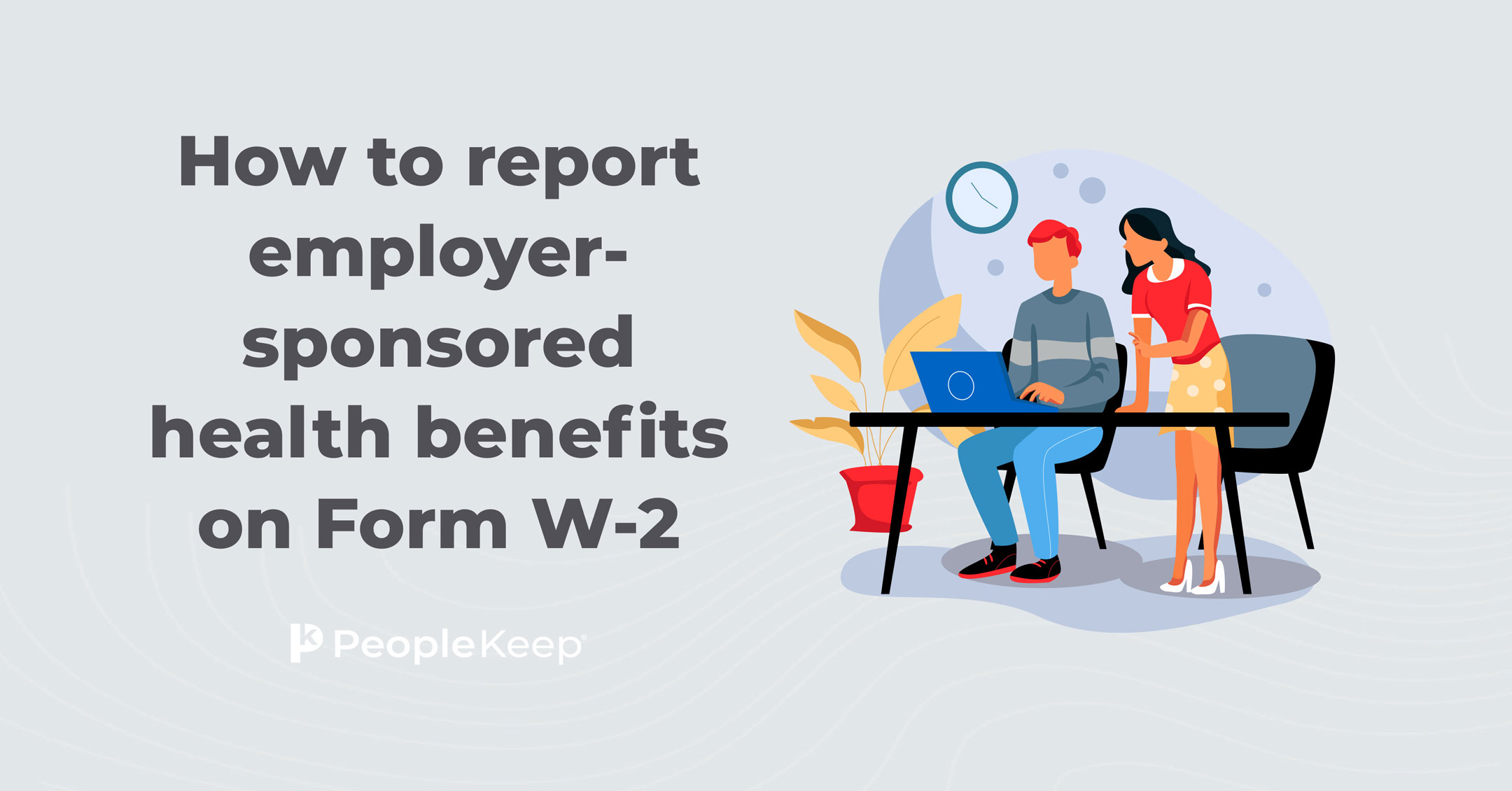How to set up an employee benefits program in one hour
By Chase Charaba on June 10, 2024 at 8:55 AM
Taking care of your staff by providing comprehensive and inclusive employee benefits is now more important than ever. That’s because benefits are among the best ways to improve employee satisfaction and retention.
But what if you don’t have the time to build and manage a competitive benefits package? This article will explain how to set up a personalized employee benefits program in one hour or less.
Takeaways from this blog post:
- Offering personalized employee benefits enables organizations to give employees more control over their benefits and empower them to use their benefits in a way that suits their needs and preferences.
- Two types of personalized benefits organizations can offer are health reimbursement arrangements (HRAs) and employee stipends. HRAs are tax-free health benefits, while stipends are taxable benefits that can cover a wide range of costs.
- Using benefits administration software, like PeopleKeep, makes it quick and easy for business owners to set up employee benefits, like an HRA.
What is an employee benefits program?
An employee benefits program is a type of compensation package offered in addition to salary that can include health or life insurance plans, employee stock options, retirement benefits, and more. Some benefits are mandatory, like workers’ compensation insurance or unemployment insurance. Other perks are voluntary, like employee assistance programs, vacation time, and childcare assistance.
Offering popular employee benefits can give your business a competitive edge in a tight labor market. Crafting a comprehensive benefits package can entice and retain potential employees.
In recent years, there’s been a shift toward personalized benefits instead of traditional benefits. Today, there are five generations in the workforce, each with unique wants and needs. Conventional types of employee benefits, such as group health insurance, don’t allow employees to control how they use them.
Personalized benefits empower employees to use their benefits in the best way for them. You can accomplish this by allowing your employees to choose the benefits and perks that are most meaningful to them. Usually, this involves setting aside a monthly allowance to reimburse employees for eligible expenses.
Which personalized employee benefits are available?
Many traditional benefit options, including small-group health insurance and life insurance, could potentially suit your organization. However, more employers are finding that personalized benefits better fit their employees’ needs.
There are many types of personalized benefits available for organizations. These include a health savings account (HSA), a flexible spending account (FSA), health reimbursement arrangements (HRAs), employee stipends, and transportation benefits, just to name a few.
HRAs
HRAs enable you to provide eligible employees with tax-free reimbursements for qualifying medical expenses that may include—depending on the type of HRA—health insurance policy premiums.
Three of the most common types of HRAs are the:
- Qualified small employer HRA (QSEHRA)
- Individual coverage HRA (ICHRA)
- Group coverage HRA (GCHRA), also known as an integrated HRA
QSEHRAs are specifically for small businesses and nonprofits with fewer than 50 full-time equivalent employees (FTEs) that don’t offer a group health plan. The IRS sets maximum annual contribution limits for QSEHRAs; however, there are no minimum limits. All full-time W-2 employees are automatically eligible for the benefit if they have a medical plan with minimum essential coverage (MEC).
In contrast, businesses of all sizes can utilize an ICHRA. For extra flexibility, the ICHRA has no minimum or maximum contribution limits, and you can vary your allowances according to job-based employee classes. Employees who opt into the benefit must have a qualifying form of individual health coverage to participate.
With a QSEHRA or ICHRA, your employees can purchase the best individual medical insurance coverage for them. This gives your employees more power over their medical care and allows them to receive personalized care. Simply set a monthly allowance for your employees and approve their reimbursement requests for eligible expenses.
If you have a group health insurance plan, you can pair it with a GCHRA. With this type of HRA, you can reimburse your employees enrolled in your group health plan for out-of-pocket expenses their policy doesn’t fully cover, like copays, coinsurance, and deductibles. Like the ICHRA, you can customize allowance amounts by specific employee classes.
HRAs are great options for organizations seeking a formal health benefit without expensive healthcare costs and the complexities of traditional insurance.
Employee stipends
Another popular type of personalized benefit is an employee stipend. Employee stipends are taxable benefits employers often provide to employees as a one-time benefit or regularly. They’re also called fringe benefits, employee perks, voluntary benefits, or lifestyle spending accounts (LSAs). They’re essentially extra wages on your employees’ paychecks.
Depending on your stipend, you can give your employees money for various expenses, like professional development, tuition reimbursement, transportation, and more. Stipends are flexible and easy to offer to many workers, including part-time employees, 1099 contractors, and international workers.
Employee stipends have fewer regulations than other types of benefits. However, the IRS considers them taxable income for employees. Additionally, employers may need to withhold federal, state, or local income taxes on stipends.
In the next section, we’ll dive into a few common types of employee stipends.
Popular employee stipend benefits
Your organization has many employee stipend options, including those covering health, wellness, and remote work expenses.
Health stipend
A health stipend allows you to offer your employees a set amount of money to pay for their health insurance premiums and other out-of-pocket costs, like prescription drug coverage, vision and dental care, mental health benefits, and other medical bills.
Health stipends are flexible, meaning they can work alongside other health benefits like group health insurance coverage, HSAs, and HRAs. Since they’re not considered a formal health benefit, they won’t impact employees’ premium tax credit eligibility and can be offered to international workers and 1099 employees.
Stipends have no contribution limits, so you can offer your employees as much allowance as you choose, and your employees can purchase the healthcare items that work best for them. The choice is theirs as long as it fits your health stipend benefit design.
However, health stipends come with some drawbacks for employers. You can’t ask employees for proof of health insurance coverage, and you can’t ask employees to prove they used their stipend on any items listed on IRS Publication 502. Additionally, health stipends can’t satisfy the Affordable Care Act’s employer mandate.
Wellness stipend
You can also offer a wellness stipend. With a wellness stipend, you can help your current employees pay for their wellness-related expenses, like gym memberships, fitness trackers, and home exercise equipment.
For example, your employees may choose to get a gym membership immediately or save their monthly allowances to buy home exercise equipment in a few months.
Offering a wellness stipend as part of your employee wellness program can improve work-life balance, boost productivity in the workplace, and reduce employee stress. To offer even more comprehensive benefits, you can couple a wellness and health stipend with a formal health benefit, like an HRA, for a more significant impact.
Remote work stipend
Some states require you to reimburse your employees for their remote work expenses. If you have remote employees, you can offer them a remote work stipend. A remote work stipend allows you to give your employees money for their work-from-home expenses. With this perk, you can ensure your staff has the support it needs to be successful and productive—no matter where they work.
For example, you can reimburse an employee for their home internet or cell phone bill. This ensures that they’ll have a stable high-speed internet connection to perform their duties and a reliable method of communication and collaboration outside of the office.
You can also offer stipends for professional development, travel, meals, education assistance, and more.
How to set up an HRA
Are you interested in offering an HRA to your employees? Setting up an HRA with benefits administration software is easy.
You can set up an HRA benefit in just a few steps:
- Choose which HRA you want to offer: When choosing the right HRA for your organization, consider your company size and employees' needs.
- Select a budget: Choose how much you are willing to offer your employees in monthly allowances.
- Design your benefit: Depending on your chosen HRA, you’ll need to consider employee class customization, eligible expenses for reimbursement, and which employees you want to participate when designing your benefit.
- Select a start date: Your HRA can start anytime, meaning you don’t need to wait for the annual open enrollment period.
- Create the necessary plan documents: The federal government requires you to create and distribute plan documents to your employees, including a formal plan document and a summary plan description.
- Tell your employees about your HRA: This is the most crucial step. You’ll want to communicate the HRA to them, especially how it works and when it starts.
1. Choose which HRA you want to offer
With three types of HRAs to choose from, there’s a personalized health benefit option for your needs. PeopleKeep’s personalized benefits advisors can help you determine which HRA best fits your needs. You can also use our HRA comparison chart to see how they compare.
2. Select a budget
Next, you’ll need to choose your budget. This will help you decide what monthly allowance you can afford per employee.
It’s alright if you don’t have a large budget for several types of employee benefits. You can still create an impact on a small budget. However, there are a few ways for you to stretch your budget.
Here are a few ways that you can increase your benefits budget:
- Reallocate funds from underutilized or unused employee benefits to the new benefit
- Eliminate any existing employee benefits that your employees don’t use (Hint: this includes in-office perks)
- Offer popular benefits instead of a raise this year
Your benefit isn’t set in stone. You can always start small and increase your monthly allowance or benefits offerings in the future. No matter how much allowance you offer, you can help ease the financial burden of healthcare for your employees.
3. Design your benefit
HRAs feature many customization options. From differing monthly allowances by family status or employee class to establishing waiting periods, you can tailor your benefit to fit your needs.
4. Select your start date
You can offer an HRA at any time, not just during open enrollment. It’s best to give your employees adequate notice so they can start looking at individual healthcare coverage options and decide whether or not they want to participate in the benefit plan. The federal government recommends giving your employees at least 90 days' notice before your benefit begins.
5. Create the necessary plan documents
An HRA must satisfy federal ERISA requirements. This includes creating legal plan documents and SPDs. If you offer your HRA through PeopleKeep, you won’t need to worry about this step. We’ll automatically generate legal plan documents for you.
6. Tell your employees about the HRA and reimburse them for eligible expenses
You’ll want to communicate your HRA to employees as soon as possible. Your employees may not use their new benefit if they don’t know about it or understand it. PeopleKeep can help onboard your employees. We’ll also send emails inviting them to your new benefit.
Once you’ve set up your HRA, you’re ready to administer your benefit! When your employees make an approved purchase and submit documentation, you simply reimburse them up to their allowance amount.
If you’re nervous about setting up and administering your HRA on your own, PeopleKeep can help. Our HRA administration software assists employers in managing their benefits quickly and easily. We review employee receipts and invoices for reimbursement and follow compliance requirements so that you don’t have to.
Get more information about the steps needed to set up your HRA in our complete blog post.
How to set up a stipend
Since stipends are informal benefits, you can start offering them right away. You can either offer them immediately as a bonus or use stipend administration software to customize your benefit. This software makes it easy to set up a comprehensive stipend benefit in minutes.
Conclusion
Creating a personalized compensation package doesn’t have to be complicated. By following the steps in this article, you can develop a comprehensive employee benefits package that empowers your staff to use their perks how they want to.
Are you ready to offer personalized benefits to your employees? PeopleKeep can help! Schedule a call with one of our benefits advisors today to see how an HRA can help you take care of your people.
This blog article was originally published on April 20, 2022. It was last updated on June 10, 2024.
Check out more resources
See these related articles

How your employee benefits package can foster inclusivity
Discover how an inclusive benefits package can foster workplace inclusivity. Learn which benefits support diversity and meet employee needs.

How to report employer-sponsored health benefits on Form W-2
Unsure how to report employer-sponsored health benefits on your Form W-2? This blog has clear explanations and examples to help you navigate the process.

Health insurance options for vision clinic employees
Explore health insurance options and benefits packages tailored for vision clinic employees. Learn how to build a comprehensive optometrist benefits package.



